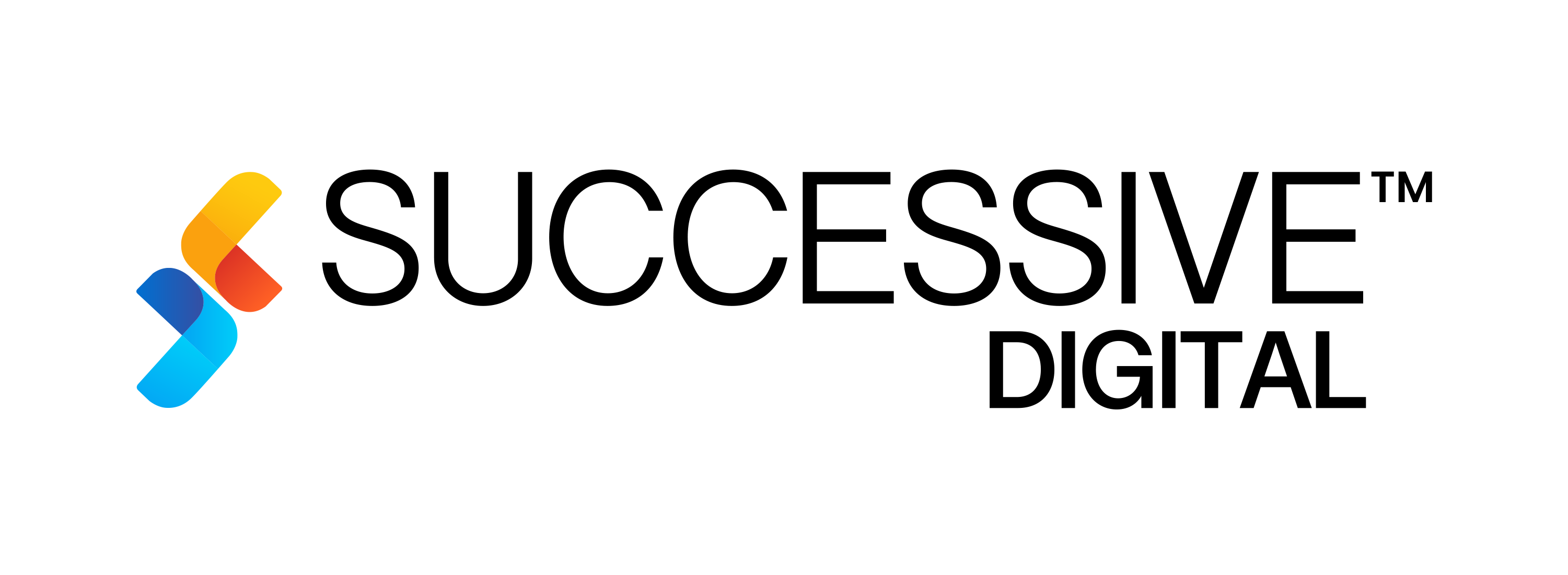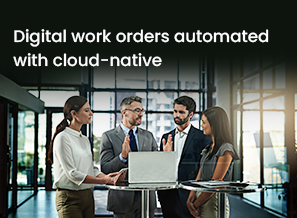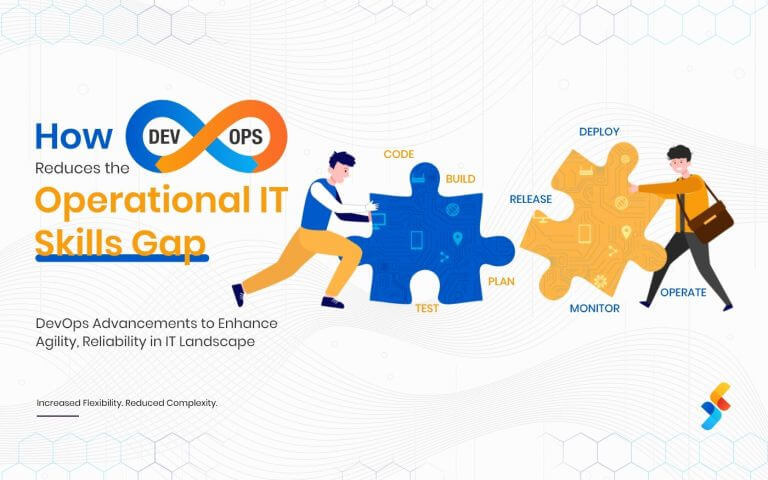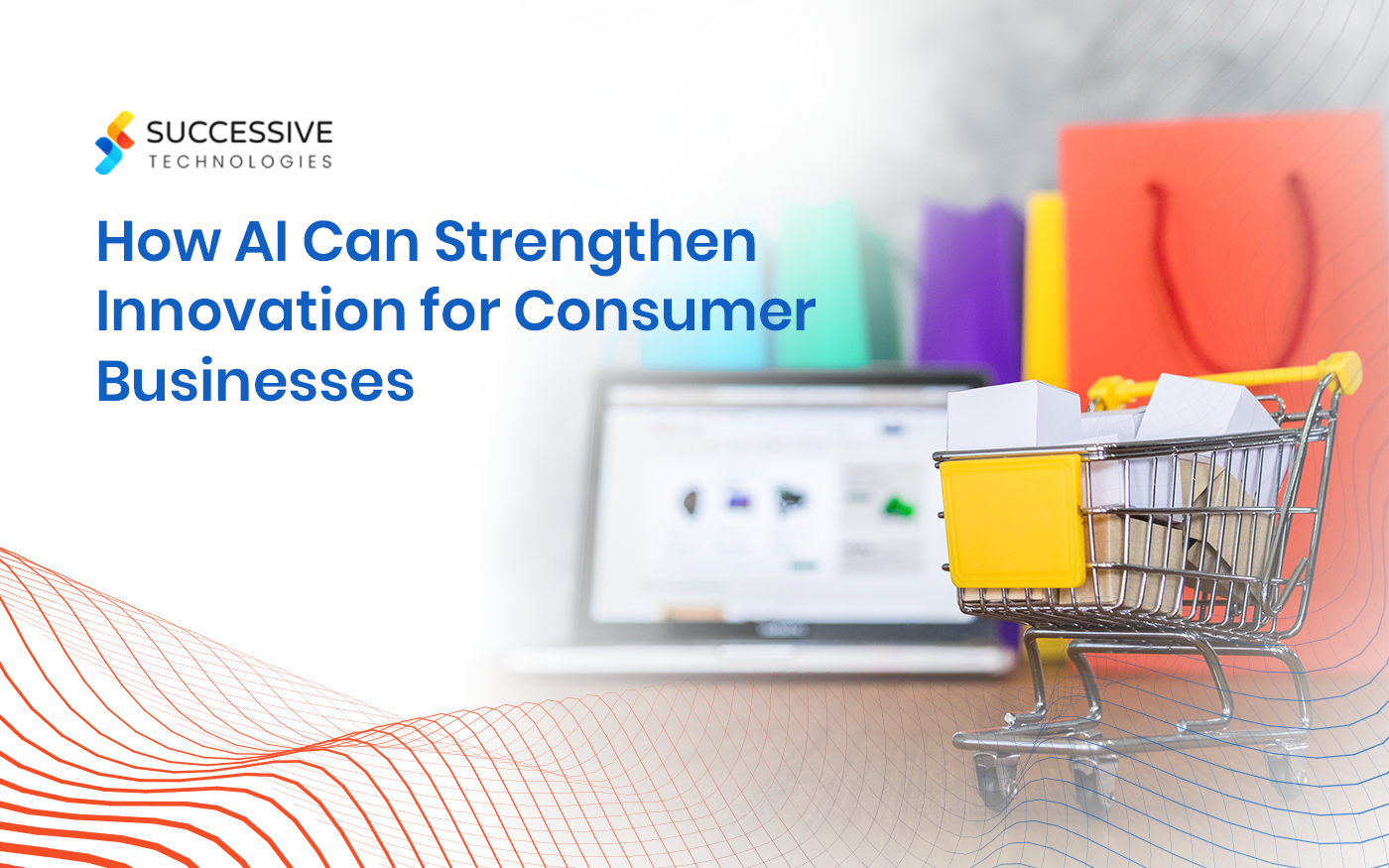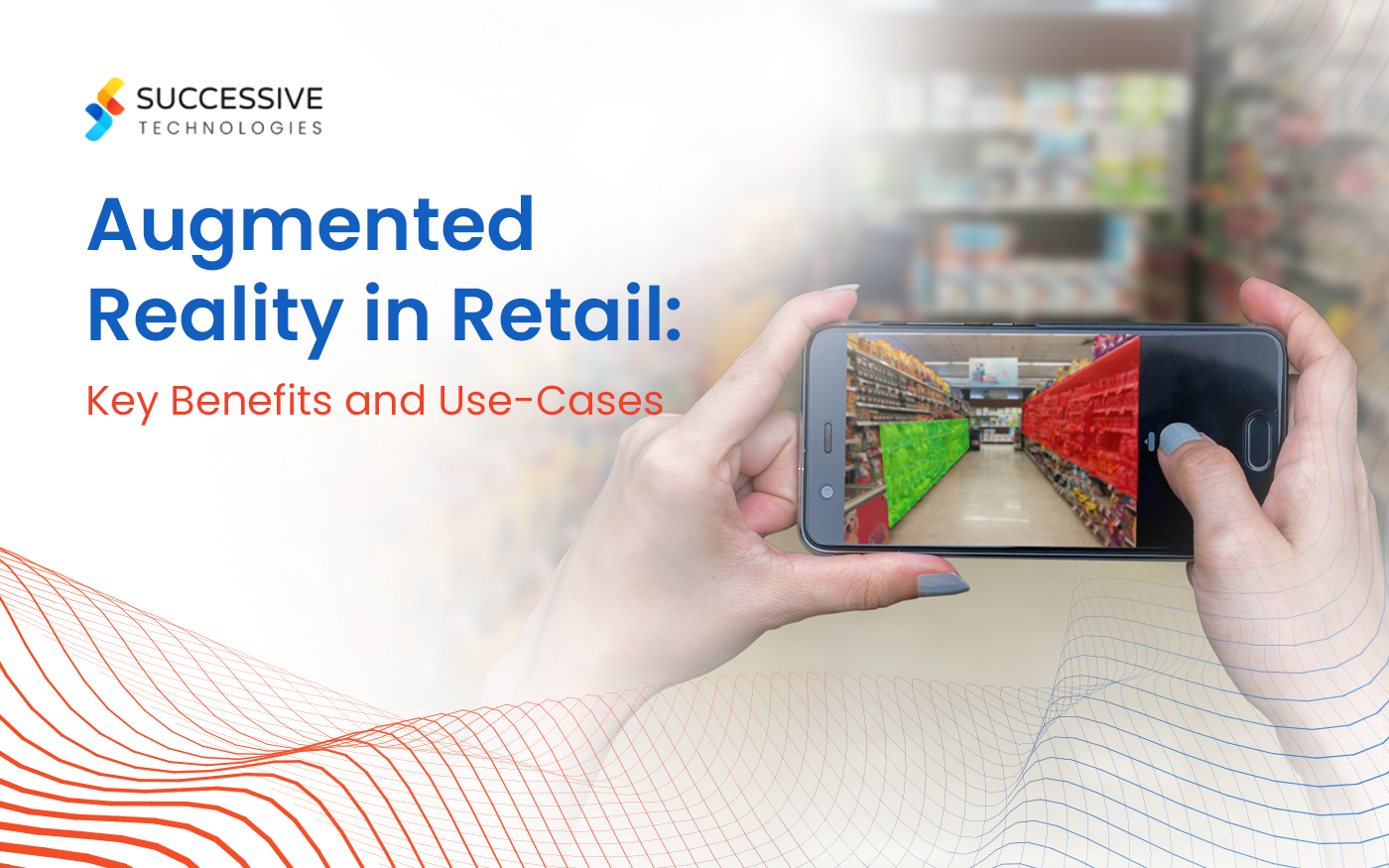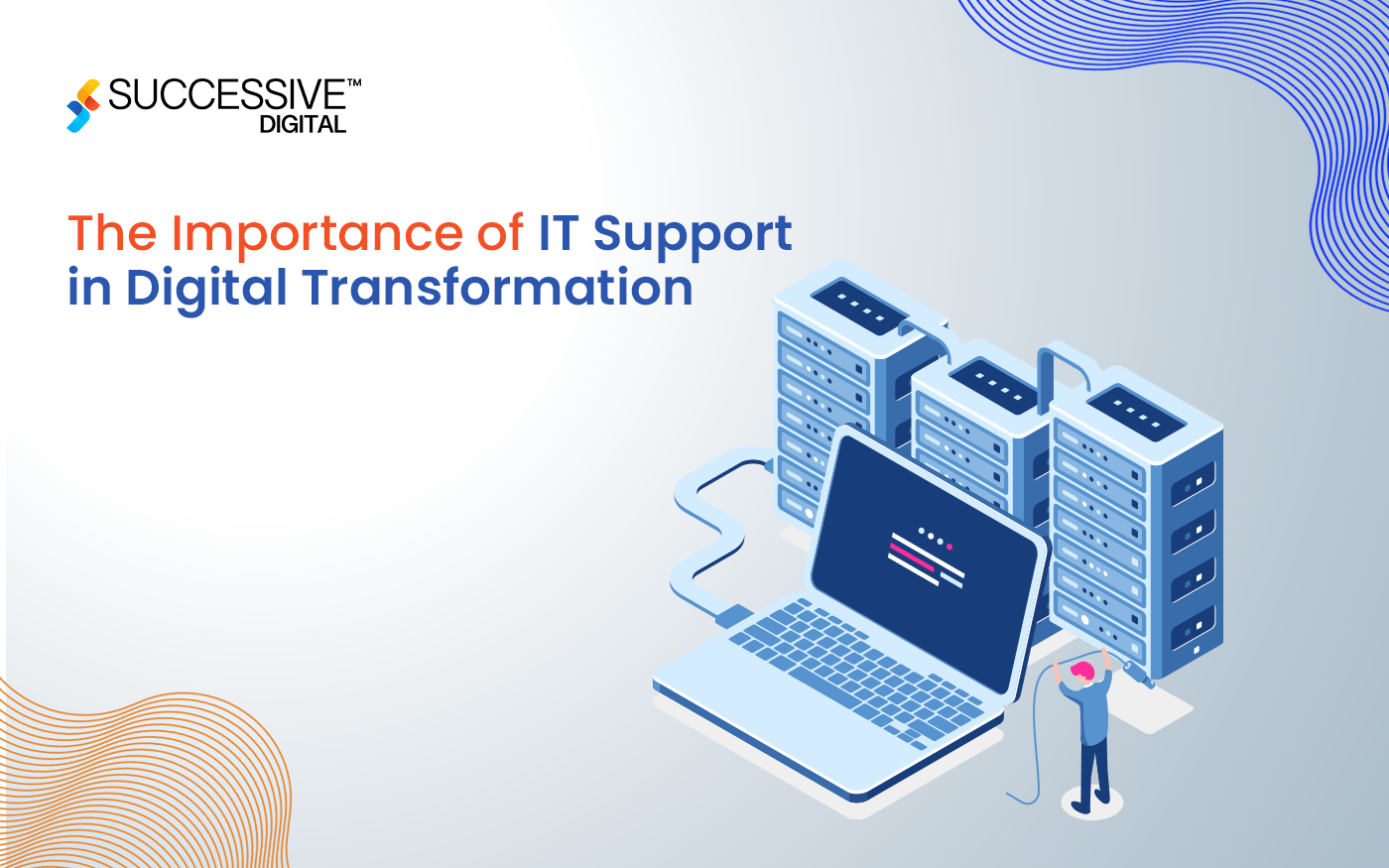Today, there are an exceptional number of ways for customers to engage with brands – from social media, mobile apps, email, phone, and of course, in person.
With so many available touchpoints, it is becoming increasingly crucial for ecommerce businesses to bring together channels that their customers are on and build a cohesive, omnichannel shopping experience for their target audience.
Many brands have already embarked on the journey of omnichannel transformation to address rising complexity in consumer behavior, provide a superior customer experience, boost revenue, and achieve other business goals.
So, what exactly is an omnichannel experience and what does it bring to the table for ecommerce businesses?
What is an Omnichannel Experience?
An omnichannel customer experience is, essentially, a method to create a seamless customer experience by connecting a company’s online and offline touchpoints such as brick and mortar shops, social media, website, email, and mobile.
Omnichannel customer experiences are different from multi-channel experiences, as touchpoints in the latter are disconnected and operate in silos.
Today, brands are using omnichannel CX strategies to deliver seamless experiences to their customers:
- Starbucks offers a premium user experience through its Starbucks card which rewards customers every time they purchase a product. The card is linked to the company’s mobile app, website, and physical stores, delivering an omnichannel customer experience every time a customer interacts with the brand.

Through its card-based rewards system, Starbucks delivers exceptional omnichannel experiences at every customer touchpoint. Source: Forbes
- Sephora’s Beauty Insider rewards program allows customers to explore their ‘beauty bag’ on their digital devices to see their past purchases, reward points, favorites list and to scan items in-store, watch tutorial videos, and find nearby stores.
- Pharmaceutical retail giant Walgreens implements an omnichannel strategy by allowing users to manage their prescriptions, find deals on in-store products, make orders online and pick them up from nearby stores – all through their mobile app.
Through omnichannel customer experience strategies, brands can deliver seamless shopping experiences by putting the customer in control and offering them unparalleled convenience.
Also Read: 8 Steps to Devising a Foolproof Customer Experience Strategy
What Are the Benefits of an Omnichannel Experience?
An omnichannel customer experience strategy holds the potential to deliver increased conversions, improved customer retention, high-quality customer data, and improved fulfillment.
Through an omnichannel strategy, businesses can achieve the following.
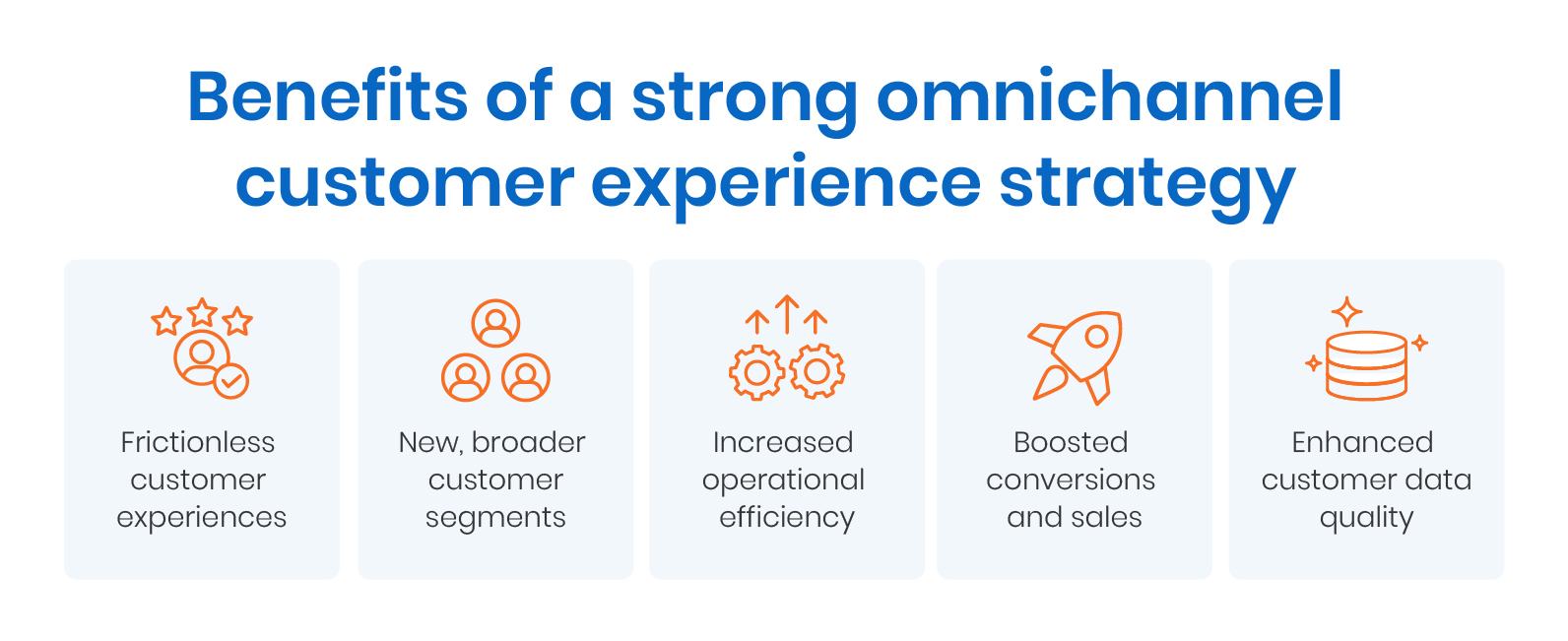
Build frictionless customer experiences
Today, customers expect consistent interaction with brands across all channels, and an omnichannel strategy can meet these expectations and enhance customer experience. In fact, presenting a brand consistently across all customer touchpoints can increase revenue by up to 20 percent!
Further, delightful experiences delivered by a comprehensive omnichannel solution helps enterprises boost customer retention by up to 90 percent.
Help reach new and broader customer segments
By adopting an omnichannel strategy, ecommerce enterprises no longer limit themselves to specific channels, mitigating the risk of losing out to competitors more active on those channels. For instance, brands not leveraging social media as a tool for customer engagement and service risk being overtaken by social-media-savvy competitors.
Further, by delivering a frictionless customer experience, omnichannel strategies can help enterprises reach new and diverse audiences – 62 percent of customers will recommend a brand to friends because of excellent service.
Increase operational efficiency
Enterprises implementing omnichannel strategies may also see increased operational efficiency and reduced costs since businesses only need to collect customer data once instead of at multiple touchpoints. Further, companies need not create and employ different strategies for different channels, thereby increasing operational efficiency.
Boost conversions and sales
It’s a fact – omnichannel strategies deliver a purchase frequency that is 250 percent higher than single-channel strategies, and also increase the average order value by 13 percent.
By personalizing the customer experience, brands can also increase the likeliness of consumers to purchase and re-purchase products or services, thereby boosting sales.
Deliver enhanced quality of customer data
Data capturing through an omnichannel solution is more reliable and accurate than traditional solutions since the data captured will be holistic and not derived from a series of siloed platforms. This data can then be used to optimize processes and refine systems. Companies can invest in tools that enable the automatic transfer of customer data to a CRM to make data collection a smooth process.
For customers, an omnichannel experience translates to the convenience of interacting with brands through channels relevant to them.
Also Read: 7 Ways to Encourage Impulse Buys on Your E-Commerce Platform
How Can Brands Build an Omnichannel Experience?
When it comes to omnichannel customer experiences, there are four pillars of successful strategies – convenience, consistency, relevance, and connection. With a robust omnichannel customer experience strategy, brands can deliver on each of these pillars and facilitate a seamless shopping experience.
Enterprises can build a successful omnichannel customer experience strategy through the following five steps.
1. Understand the customer’s digital journey to reach out via proper channels
Mapping out customers’ digital journeys can help enterprises understand where their audiences are, how customers interact with their brand, and which channels would best align with their digital behavior. To this end, brands can build customer personas and audience segments to identify and better understand touchpoints.
Five critical considerations while mapping customer journeys on ecommerce platforms include:
- Where is a customer making purchase decisions?
- When are these purchase decisions made?
- What kind of product or service is being purchased?
- How are the purchases being made?
- What is the frequency of purchases?
By focusing on the right set of customers, companies can identify what motivates their audiences, what channels they are on, and prioritize their efforts accordingly.
2. Design end-to-end service journeys to determine capabilities
Once the target audience has been identified and segmented, businesses can focus on building service journeys across digital and in-store channels, keeping in mind that customers will migrate across channels. These service journeys must also take into account evolving customer behavior and expectations, and a future proposition of a fully omnichannel retail industry.
While building a service journey, enterprises must consider:
- Which service journey will be the most cost-effective
- The complexity of improving customer experience during a journey
- The importance of the service journey to the customer
- The availability of requisite capabilities
To arrive at service journeys that are in alignment with their business goals and also deliver a smooth omnichannel customer experience, companies must constantly be in ‘test-fast-and-learn’ mode – testing prototypes, failing and adapting to build successful solutions.
A well-founded service journey will enable seamless movement of customers across channels that will translate to a cohesive, enhanced customer experience.
3. Invest in tools to deliver a seamless customer experience
Smooth, cohesive omnichannel experiences are difficult to construct without investing in the right tools and technological architecture. Brands will need to adopt a mix of online and offline tools to create a well-rounded omnichannel customer experience strategy.
Examples of tools popular for delivering improved customer experience include the following:
- Customer relationship management (CRM) tools like HubSpot, Salesforce, Zendesk, Zoho, etc.
- Social media management (SMM) tools like Sproutsocial, Hootsuite, Sendible, etc.
- Customer support tools like TalkDesk, Helpshift, Freshdesk, etc.
- Personalization tools like Adobe Target, Personyze, etc.
- Marketing automation tools like HubSpot, Marketo, Userfox, etc.
- Data analytics tools like Microsoft Power BI, Tableau, Google Data Studio, etc.
4. Create a solid foundation for customer feedback and support

As a target audience interacts with a brand across various channels, it is essential to understand what your customers think of the end-to-end journey. Well executed customer feedback loops can:
- Help improve products and services
- Measure overall customer satisfaction
- Improve customer retention
It is also vital for businesses to provide omnichannel customer support to enable customers to communicate with the brand, regardless of the channel. Customer support must be synchronized across all channels. For instance, brands can invest in tools that allow agents to communicate with customers via live chat, video call, or phone call – all through a single integrated system.
Companies can also consider enhancing their customer support efforts by adopting AI-powered tools like chatbots to enable customers to self-serve.
5. Measure customer experience data

Now that your business has adopted an omnichannel customer experience strategy, it’s time to gauge if the effort was worth it. To this end, here are some performance metrics for enterprises to consider tracking.
Product sales over time – Brands can opt for sales analysis reports to track sales over time and compare performance before and after implementation of an omnichannel CX strategy.
Customer satisfaction – Customer satisfaction can be measured through feedback tools like Net Promoter Score (NPS) and Customer Satisfaction (CSAT).
Customer retention – A primary business goal of an omnichannel CX strategy is to boost customer retention, which can be measured by examining customer sales over time reports.
Conversion rates – Conversion rates are an indicator of the success of a brand’s omnichannel customer experience strategy and can be determined by calculating the percentage of visitors that make a defined conversion action on your ecommerce site or physical store.
Cart abandonment – Cart abandonment is an indicator of an obstacle in the customer’s digital purchasing journey and can help brands identify existing or potential bottlenecks in conversion.
Read Next: How Retailers Can Overcome Their Biggest Challenges Today
The Future of Retail and Omnichannel Customer Experiences
As consumer behavior evolves and expectations rise, traditional boundaries between channels will no longer be valid. Soon, businesses can expect the meteoric rise of ‘phygital’ shopping experiences.
With a more remarkable shift towards ecommerce, in-store traffic may decline and customers may not come back to physical stores at the same frequency they used to. In the future, the main chunk of the sales process may occur online while stores will be utilized primarily for showrooming.
Businesses can also expect hyper-personalization of the online and offline shopping experience – through the collection and analysis of data, brands will be able to customize shopping experiences for their customers and deliver better fulfillment.
In the current landscape, businesses intending to adopt omnichannel customer experience strategies must understand their customers, design optimal service journeys, take regular customer feedback and measure the impact of their plan – all to put the customer in control of their buying journey.
Did you know? Omnichannel user experiences make up one of seven critical factors that contribute to the success of ecommerce giants. To unlock all elusive secrets to retail success, read our piece on the 7 secrets of ecommerce giants and what you can learn from them.

